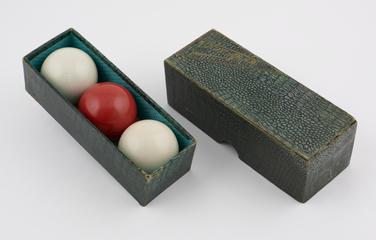another material which is somewhat related is catalin
if you go searching for catalin radios you will find some pretty extreme prices. here is one example.
Get the best deal for Catalin Radio from the largest online selection at eBay.ca. | Browse our daily deals for even more savings! | Free shipping on many items!
www.ebay.ca
the catalin radios were the start of brightly colored radios, earlier ones were mainly wood and brown bakalite, what often happens is that the radio chassis is bolted to the case, the case shrinks, the chassis does not and it cracks. part of their rarity is due to it being an unstable material and any complete and undamaged radio is probably worth upwards of a thousand dollars, some are worth several thousand.
I bought a reel to reel made in Birmingham 1952, it has some beetles recordings and a nice historic tale about rebuilding the ring road around birmingham which had basically been bombed out during the war. it plays 10 inch reels and is the same size as a standard dishwasher. a cabinet was built for it near the time of manufacture, with a mono amp. I've yet to restore the player but I have listened to the tapes. the maker, bradmatic, got involved from some wiht the US who developed the mellotron which was an important part of music history. a mellotron is like a keyboard where each key plays sounds from a separate tape reel so tape heads were needed for each note. It can sound like any instrument and you cna pick out sounds from it in many famous recordings if you are familiar.
it is likely the Beatles recordings are recorded from records, or from radio but I'd like to verify that. there is a song called "everything she does" (she does for you) which is quite nice
many confuse catalin and bakelite, bakelite is generally stable. you might find catalin pool balls because it came in bright colors.
many of those colors changed due to their instability, so white became caramel etc.
there is a following of radio collectors who only collect catalin radios, some have their life fortunes invested. they probably won't go down in value. some thigns like fashion jewlery, combs, or fountain pens are likely to be made with it. some of these materials degrade with age.
there were a number of trade names for early plastics, here is a sample of a jug made of eurea formeldahide, Ive heard of the term plaxton used too, somethign similar I think, a white plastic, now ivory colored and pretty unstable.

collection.sciencemuseumgroup.org.uk
this science website has info about early plastics , there are some pool balls too
Three billiard balls of urea formaldehyde, in original green box, two white and one red. Made by Editions Fornells, France. Box lid and two balls inscribed `For.Match'

collection.sciencemuseumgroup.org.uk
heres a lovely green material called casin.
Pendant of carved and moulded green casein in form of papyrus flower, Egyptian style, 1920's.

collection.sciencemuseumgroup.org.uk
aside from radios i like some clocks, here's a neat example ( not mine)

collection.sciencemuseumgroup.org.uk
I have a wind up clock with a beautiful early plastic case similar to this that I quite admire
because I colllect old radios, I once had the chance to buy a collection of thousands of radio knobs. it appears to be a collection of collections as there are thousands. there are examples of a lot of these early plastics.
there were literally thousands of knob designs and many loose their knobs. no radio is really complete without its original knobs so many have the wrong ones.
one reason I collect such things is that i consider them industrial art examples and I'm quite fascinated by the case design, I admire a lot of art deco items. there were a lot of common ones and a lot of designs that were futuristic, machine age etc. I tend not to collect radios worth thousands but I like to admire all the different styles and changes as they progressed from about the 20's to early 60's I tend to focus upon tube , hollow state or pre transistor era. It is also interesting ot get into the early electronics and discover how electronic designs were advanced through these early years.
you may also find examples of "repwood" what they did was pack fine sawdust mixed with glue into molds, then it was typically painted ot look like wood carvings and applied, often leaving the look of carving without the labor. often it is combined with real wood and veneers to make really showy pieces that appear carved. You may see somem of that in things like ball racks etc.
here is an example of a cool repwood radio
Find many great new & used options and get the best deals for Vintage 1931 Crosley Buddy Boy Radio Model 58 Rep-Wood Shell at the best online prices at eBay! Free shipping for many products!
www.ebay.ca
many of those early plastic did break down, where society made a mistake is in creating and over-use of plastics which did not break down and now our addiction to plastic is affecting oceans and streams.
I have some examples of unbreakable dinnerware whic is similar to bakelite but in bright colors, that stuff seems really stable. melmac is a common brand. I like the stuff, it lasts forever. i believe the general term is melamine, You may find pool balls made of that?





